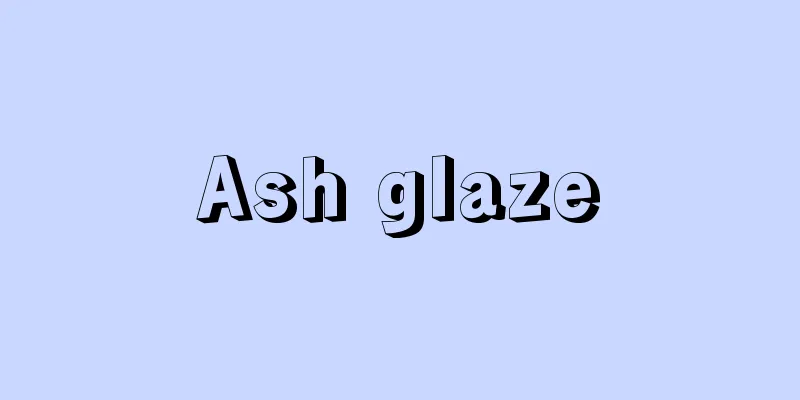Exclusive economic zone

|
The EEZ is a zone of water set out beyond the territorial sea, up to 200 nautical miles from the coastal baseline. It was established in 1982 by the United Nations Convention on the Law of the Sea to meet the claims of coastal states regarding marine resources outside their territorial waters and to ensure the optimal use of marine resources within the zone. [Norio Tanaka] Rights and Obligations of Coastal StatesThe rights and obligations of coastal states in this zone are regulated by the United Nations Convention on the Law of the Sea. In the exclusive economic zone, coastal states have (1) sovereign rights for the exploration, exploitation, conservation and management of the superjacent waters of the seabed and the natural resources, living or non-living, of the seabed and its subsoil, as well as sovereign rights with regard to other activities for the economic exploration and exploitation of the zone, (2) jurisdiction over the establishment and use of artificial islands, installations and structures, marine scientific research, and the protection and preservation of the marine environment, and (3) other rights and obligations as provided for in this Convention. On the other hand, in the exclusive economic zone, all states enjoy the freedom of navigation, overflight and the laying of subsea cables and pipelines. In addition, to the extent that is compatible with the regime of the exclusive economic zone, other rules of international law relating to the regime of the high seas also apply to this zone. [Norio Tanaka] Conservation and optimal utilization of biological resourcesCoastal states have the obligation to promote the conservation and optimal utilization of the living resources in their exclusive economic zones. To this end, they must determine the allowable catch of living resources in these zones, and if they do not have the capacity to catch all of them, they must provide other states with access to the surplus resources under fisheries agreements. Landlocked and geographically disadvantaged states have the right to participate on an equitable basis in the exploitation of the surplus living resources in the exclusive economic zones of coastal states in the same region. Nationals of other countries who are granted access must comply with the conditions imposed by the coastal state, such as fishing fees, fishing quotas, and fishing regulations. In addition, coastal states may take measures such as boarding, inspecting, seizing, and prosecuting foreign fishing vessels to ensure compliance with the laws and regulations enacted for the management of living resources in these zones. However, the penalties imposed on the crew of foreign fishing vessels are limited to fines, and the vessels and crew are promptly released if a deposit is posted. [Norio Tanaka] Continental Shelf SystemThe shallow seabed extending outside the territorial sea is called the continental shelf. As it became possible to develop underground resources such as oil there, the Convention on the Continental Shelf was adopted at the First Conference on the Law of the Sea in 1958. This convention defined the continental shelf as the seabed extending outside the territorial sea up to a depth of 200 meters, or even deeper, where natural resources could be developed, and decided that coastal states would exercise sovereign rights to explore and develop continental shelf resources. However, with the subsequent advancement of seabed development technology, coastal states showed a tendency to expand the scope of the continental shelf based on the possibility of development, so the convention moved in the direction of recognizing sovereign rights of coastal states to develop resources in the entire continental margin, which is the natural extension of the land beyond the geographical continental shelf. At the Third Conference on the Law of the Sea, it was decided to establish an exclusive economic zone of 200 nautical miles offshore, and that coastal states would have sovereign rights to explore and develop all natural resources in and beneath the sea, seabed and below in this zone. For this reason, the UN Convention on the Law of the Sea defines the extent of the continental shelf as the seabed area beyond the territorial waters of a coastal state to the outer edge of the continental margin as a natural extension of the land area, or the seabed area up to 200 nautical miles if the outer edge of the continental margin ends within 200 nautical miles. In other words, coastal states have sovereign rights over the natural resources of the seabed up to 200 nautical miles from the coast, regardless of the shape of the seabed, but if the outer edge of the continental margin extends beyond 200 nautical miles, the continental shelf system applies only to the seabed beyond that 200 nautical miles. [Norio Tanaka] Jurisdiction over Other MattersStates that wish to carry out marine scientific research in their exclusive economic zones and on their continental shelves must obtain the consent of the coastal State, which may also take certain measures to protect the marine environment in response to foreign vessels passing through its exclusive economic zone, if those vessels discharge material in violation of international rules and standards, causing serious damage to the resources of the coastal State's territorial waters or exclusive economic zone. In this way, the 200-nautical-mile exclusive economic zone was established as a zone with a new legal status different from both territorial waters and the high seas, based on the UN Convention on the Law of the Sea. 160 countries and regions have already established exclusive economic zones. When Japan ratified the UN Convention on the Law of the Sea in June 1996, it also enacted the Law on Exclusive Economic Zones and Continental Shelf, and took the plunge into establishing a 200-nautical-mile exclusive economic zone. [Norio Tanaka] "Oda Shigeru, Annotated United Nations Convention on the Law of the Sea, Volume 1 (1985, Yuhikaku)" ▽ "Takabayashi Hideo, Study of the Territorial Sea System (3rd Edition) (1987, Yushindo Kobunsha)" ▽ "Yamamoto Soji, Law of the Sea (1992, Sanseido)" ▽ "Takabayashi Hideo, Achievements and Challenges of the United Nations Convention on the Law of the Sea (1996, Toshindo)" [References] | | | | |Source: Shogakukan Encyclopedia Nipponica About Encyclopedia Nipponica Information | Legend |
|
領海の外側に海岸の基線から測って200海里までの範囲内で設定される水域のこと。略称EEZ。この水域は、領海外の海洋資源に対する沿岸国の要求に応えるとともに、水域内の海洋資源の最適利用を確保することを目ざして、1982年の国連海洋法条約によって制度化されたものである。 [田中則夫] 沿岸国の権利と義務この水域における沿岸国の権利と義務は、国連海洋法条約によって規定されている。沿岸国は、排他的経済水域において、(1)海底の上部水域ならびに海底およびその下の天然資源(生物であるか非生物であるかを問わない)の探査、開発、保存および管理のための主権的権利、ならびに、この水域の経済的な探査、開発のための他の活動に関する主権的権利、(2)人工島、設備および構築物の設置と利用、海洋の科学的調査、海洋環境の保護と保全に関する管轄権、(3)この条約に定めるその他の権利および義務を有する。他方、すべての国は、排他的経済水域において、航行の自由、上空飛行の自由、海底の電線とパイプライン敷設の自由を享受する。また、排他的経済水域の制度と両立する限度で、公海制度に関する国際法の他の規則もこの水域に適用される。 [田中則夫] 生物資源の保存と最適利用沿岸国は、排他的経済水域において生物資源の保存と最適利用を促進する義務を負う。そのため、沿岸国は、この水域内における生物資源の漁獲可能量を決定し、自国がそのすべてを漁獲する能力を有しない場合、その資源の余剰分については、漁業協定に基づき他国に入漁の機会を与えなければならない。内陸国や地理的不利国は、同一地域の沿岸国の排他的経済水域における生物資源の余剰分の開発に、衡平の基礎のもとで参加する権利を有する。入漁を認められた他国民は、入漁料、漁獲割当量、漁業規制など沿岸国が定める条件を遵守しなければならない。また、沿岸国は、この水域における生物資源の管理のために制定した法令の遵守を確保するために、外国漁船に対して乗船、臨検、拿捕(だほ)、訴追などの措置をとることができる。もっとも、外国漁船の乗組員に対する処罰は罰金刑に限られ、供託金が提供された場合には船舶と乗組員が速やかに釈放される。 [田中則夫] 大陸棚制度領海の外側に連なる浅い海底を大陸棚というが、そこにある石油などの地下資源の開発が可能になったので、1958年の第一次海洋法会議で「大陸棚に関する条約」が採択された。この条約では、領海の外側の水深200メートルまでの海底、または、それ以上深くても天然資源の開発が可能な海底を大陸棚と定義して、大陸棚資源の探査と開発に沿岸国が主権的権利を行使することにした。しかし、その後における海底開発技術の進歩に伴い、沿岸国が開発可能性を根拠にして大陸棚の範囲を拡大する傾向を示したため、地理学上の大陸棚をこえて陸地の自然延長の及ぶ大陸縁辺部全体の資源開発に、沿岸国の主権的権利を認める方向に進んだ。第三次海洋法会議においては、距岸200海里の排他的経済水域を設立して、沿岸国がこの水域の海中と海底およびその下にあるすべての天然資源の探査と開発に主権的権利をもつことが決定された。そのため、国連海洋法条約では、大陸棚の範囲について、沿岸国の領海をこえて陸地領域の自然延長の及ぶ大陸縁辺部の外縁までの海底区域、または、大陸縁辺部の外縁が200海里以内で終わっている場合には200海里までの海底区域とすることになった。つまり、沿岸国は、海岸から200海里までの海底の天然資源については、海底の形状にかかわりなく主権的権利をもち、大陸縁辺部の外縁が200海里外に延びている場合には、200海里外の海底についてだけ大陸棚制度が適用されることになった。 [田中則夫] その他の事項に関する管轄権排他的経済水域と大陸棚において海洋の科学的調査を実施しようとする国は、沿岸国の同意を得なければならない。また、沿岸国は、排他的経済水域を通航する外国船舶が、国際規則および基準に違反する排出を行って、沿岸国の領海または排他的経済水域の資源に対して重大な損害を生じさせた場合には、その外国船舶に対して海洋環境を保護するために一定の措置をとることができる。 このように、200海里排他的経済水域は、国連海洋法条約に基づいて、領海とも公海とも異なる新しい法的地位をもつ水域として確立した。すでに160か国・地域が排他的経済水域を設定している。日本も、1996年(平成8)6月に国連海洋法条約を批准した際、「排他的経済水域及び大陸棚に関する法律」を制定し、200海里排他的経済水域の設定に踏み切った。 [田中則夫] 『小田滋著『注解国連海洋法条約 上巻』(1985・有斐閣)』▽『高林秀雄著『領海制度の研究』(第3版)(1987・有信堂高文社)』▽『山本草二著『海洋法』(1992・三省堂)』▽『高林秀雄著『国連海洋法条約の成果と課題』(1996・東信堂)』 [参照項目] | | | | |出典 小学館 日本大百科全書(ニッポニカ)日本大百科全書(ニッポニカ)について 情報 | 凡例 |
>>: Sparrow hawk (English spelling)
Recommend
Mezzogiorno
Refers to southern Italy. Geographically, it inclu...
IOJ - IOJ
《 International Organization of Journalists 》Inter...
Barbarians
A derogatory term given by the Han people living ...
Artabanus IV
…In the second half of the 2nd century, Seleucia ...
Canal Zone - Canal Zone (English spelling)
Also known as the Panama Canal Zone. The area alon...
Composite material
A material made by combining and molding two or m...
Kigensetsu - National Foundation Day
This holiday was established by the Meiji governm...
Administrative reform - gyoseikaikaku
Changes or the process for changing the administr...
Movie - eiga (English spelling) motion picture English
A film is a device that shows moving images by op...
Ichimachi - Ichimachi
...A city in the northern part of the Ishikari Pl...
Abies grandis (English spelling)
… [Yukio Taniguchi]. … *Some of the terminology t...
Ilija Garašanin
1812‐74 Serbian politician. During the reign of Pr...
Tugwell, RG (English spelling) TugwellRG
...In the 1932 US presidential election, the Demo...
Ginoza [village] - Ginoza
A village in Kunigami District, Okinawa Prefecture...
Dry spring water - Karasen-sui
〘 noun 〙 A pond that is made recognizable as such ...


![Guaytecas [island] - Guaytecas](/upload/images/67d07d07d247d.webp)






